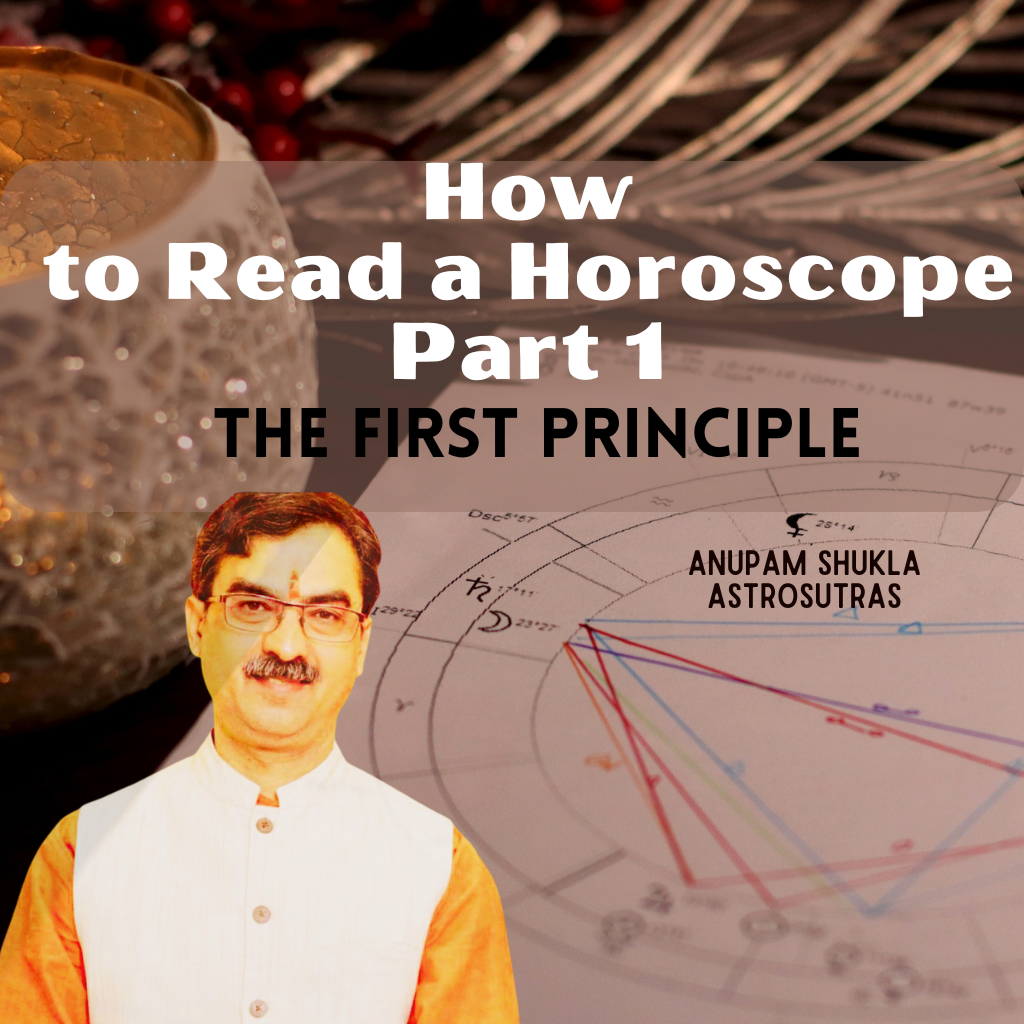How to Read a Horoscope – Part 1

It is our firm belief that the birth chart, or horoscope, holds within it the secrets of an individual’s life. This sacred map, created at the moment of birth, contains embedded codes that reveal not only the native’s past and present but also their potential future. For those who seek guidance from this divine science, astrology offers insights into life’s possibilities, challenges, and karmic patterns.
In modern times, the beneficiaries of astrology range from genuine seekers of knowledge to those influenced by the commercialized astro-market. However, the core intent remains unchanged—people turn to astrology to uncover the best aspects of their lives and navigate their journey with clarity.
For learners and practitioners of astrology, the ability to decode a horoscope is not merely a skill but an evolving art. Through rigorous training and experience, they learn how to unlock the hidden meanings of a chart. In this discussion, we aim to explore the different approaches to horoscope interpretation and the fundamental principles that form the rock-solid foundation of this ancient science.
The Role of the Ascendant Degree in Decoding a Horoscope
The Ascendant degree (Lagna) is a crucial element in a birth chart. It is the key that unlocks multiple dimensions of life, providing deep insights through various systems of astrology, including:
- Jatak Shastra (Natal Astrology)
- Varga Jyotish (Divisional Charts)
- Shadbal (Sixfold Strength of Planets)
- Ashtakavarga (Eightfold Planetary Strength)
The ascendant degree carries encoded information about the individual’s personality, health, inclinations, and life path. It serves as the primary reference point for all planetary influences in a chart. Understanding its significance allows an astrologer to build a structured approach toward reading a horoscope.
The Pillars of Authentic Astrology
To ensure that astrology remains a precise and reliable discipline, one must adhere to certain foundational principles. The first and foremost among them is The First Principle.
What is the First Principle in Astrology?
The First Principle in astrology refers to the fundamental source of information that is extracted directly from the core texts of seers. It is the initial, straight formulation that serves as the base for all further interpretations. This principle involves:
- Identifying the Primary Information – Extracting raw data from the horoscope based on classical formulations.
- Processing the First Derivative – Applying logical extensions and interconnections to refine the understanding.
- Deriving the Second and Third Levels of Interpretation – Moving from general principles to highly specific insights tailored to the native’s life.
Why is the First Principle So Important?
The importance of this principle lies in its authenticity and accuracy. Without a strong foundational understanding, any analysis risks being speculative rather than systematic. The First Principle ensures that an astrologer:
- Maintains the purity of astrological knowledge.
- Bases their interpretations on well-established guidelines rather than subjective opinions.
- Achieves precision in predicting life events and patterns.
To Be Continued…
This discussion is only the beginning. In the next part, we will delve deeper into:
- How planetary dispositors play a role in decoding a horoscope.
- The interplay of houses, planets, and signs in structuring a reading.
- The application of divisional charts for refining predictions.
Stay tuned as we uncover the profound methodologies that make horoscope reading a true blend of science, logic, and divine wisdom.

